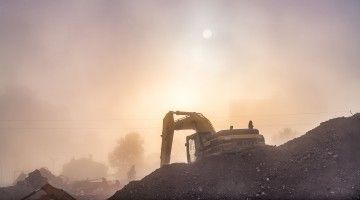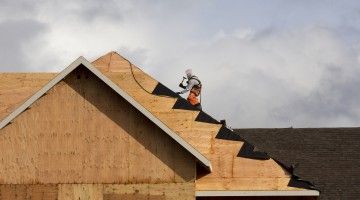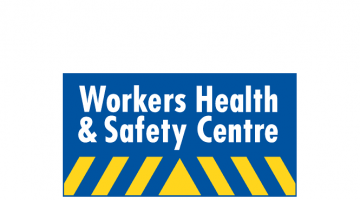Construction sector
IWH research that specifically involves construction workplaces, workers, unions, employers and/or associations, as well as research on programs that specifically target the construction sector, is collected together here. Not included is IWH research that cuts across all or many sectors, even though it may be relevant to the construction sector. For this reason, visitors are encouraged to explore beyond this page to find equally important information on the prevention of work injury and disability in construction.
Featured

At Work article
Safer work practices, lower injury rates maintained two years after Ontario’s working-at-heights training came into effect: study
In 2015, the Ontario government implemented a working-at-heights (WAH) training standard to ramp up fall prevention efforts. An IWH study team has now gathered two additional years of data on the effectiveness of this training requirement—both on work practices and injury rates.
Published: November 3, 2023

At Work article
Comparing the costs, benefits of silica dust prevention methods for construction workers
Construction workplaces can use different methods to reduce exposure to silica dust and protect workers from cancer down the road. But which methods should they opt for? A cost-benefit analysis led by IWH offers some guidance.
Published: August 2020
Journal article
Journal article
A probabilistic approach for economic evaluation of occupational health and safety interventions: a case study of silica exposure reduction interventions in the construction sector
Published: BMC Public Health, February 2020
Journal article
Journal article
Utilizing construction safety leading and lagging indicators to measure project safety performance: a case study
Published: Safety Science, December 2019

At Work article
Employers certified by COR programs have greater reduction in injury rates: studies
Although COR programs are offered in most provinces and territories across the country, little research has been done on their effectiveness. A research program recently examined workers' compensation data in B.C. and Alberta for links between certification and injury rates.
Published: November 2019
IWH Speaker Series
IWH Speaker Series
The effectiveness of COR in preventing work injury: lessons from Alberta and B.C.
Certificate of Recognition (COR) programs are voluntary audits that recognize employers for having strong occupational health and safety (OHS) practices. In this presentation, IWH Scientist Dr. Chris McLeod shares his research in British Columbia and Alberta on the effectiveness of COR programs in preventing work-related injury.
Published: November 2019

IWH in the media
Guest column: T.O. council's decision on construction tendering makes sense
On June 19th , Toronto City Council voted overwhelmingly to maintain its contractual relationship with the province’s major construction union. It's a longstanding relationship that militates towards high quality work, safer job sites and a robust training sector, writes guest columnist Phil Gillies, who points to IWH research on the union safety effect to support one of his arguments.
Published: Toronto Sun, July 2019

At Work article
Ontario’s working-at-heights training led to safer practices, reduced injury claims rates
Ontario's mandatory training standard for construction workers at risk of falls from heights was effective in reducing claims rates—especially among small employers and high-risk subsectors—an IWH evaluation study found.
Published: April 2019

IWH in the media
Regulated working at heights training works and needed: studies
Two recently released Ontario studies demonstrate why mandatory, standardized working at heights training is so critical to worker well-being. One study undertaken by the Institute for Work & Health (IWH) conducted an evaluation of the impact the province’s working at heights training standard had on workers and their work sites. A second and earlier probe prepared by the Ministry of Labour (MOL) for the Chief Prevention Officer undertook root cause analysis of worker deaths from falls from heights.
Published: Workers Health & Safety Centre, April 2019

IWH in the media
WAH training standards show 'significant' results: IWH
Findings of a study evaluating the effectiveness of Ontario’s working at heights (WAH) training standards, conducted by a team of researchers at the Institute for Work and Health (IWH), were revealed recently during the Ontario General Contractors Association’s Leadership Day and COR Open House in Mississauga, Ont., Angela Gismondi reports.
Published: Daily Commercial News, March 2019

IWH in the media
Opinion: Avoid shoddy work by using unionized tradespeople for public construction projects
Why do many municipalities, school boards, social housing corporations and other public bodies have long-standing arrangements that see their construction projects built by skilled tradespeople who are members of construction unions? Because the employees are well trained, they work safer and, in the long run, are not a significantly greater cost to the taxpayer than their non-unionized counterparts, writes Phil Gillies in an op-ed that cites Institute for Work & Health research.
Published: Toronto Sun, March 2019